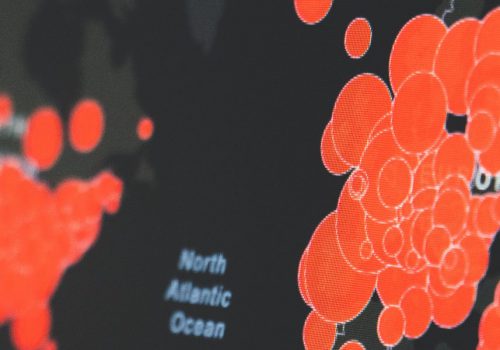We all know that like attracts like but when it comes to the workplace, differences can be a very good thing. Numerous studies have shown that workplace diversity and inclusion can drive innovation and lead to new markets and financial benefits. There is also evidence that when employees feel heard, they are far more likely to be motivated and do their best work, in conditions that enable effective collaboration and participation. Yet, while society is constantly changing, sometimes the workplace doesn’t keep up.
Developing an inclusive organizational culture is no small feat and requires consistent commitment from all levels, particularly the top. Sensitive issues inevitably arise; differing cultural norms need to be considered and non-inclusive or discriminatory behaviour cannot be ignored. But an inclusive culture not only brings many benefits, it touches on some fundamental human rights.
Recognizing the immense importance of this, ISO has just published a new standard to guide organizations every step of the way. ISO 30415, Human resource management – Diversity and inclusion, details what is required to create a diverse and inclusive organizational culture and leverage the benefits that this brings. On the occasion of its publication, we talk to Lorelei Carobolante, a globally renowned expert in human resources and diversity. As Project Leader of the ISO working group [1]: responsible for its development, she tells us about the challenges and rewards of equity, fairness, voice and equality in a diverse and inclusive workplace.
[1] Working group WG 8, Diversity and inclusion, operates under technical committee ISO/TC 260, Human resource management, whose secretariat is held by ANSI, ISO’s member for the USA.
Lorelei Carobolante
Project Leader of ISO/TC 260’s working group WG 8
Where is the world at when it comes to equity and diversity in the workplace?
Demographics have changed, and organizations now serve more diverse communities, markets and stakeholders. Thus, many changes have occurred in the workplace. Yet, the overall employment situation could be represented as a randomized checkerboard: it is very non-uniform and each sector has its own challenges due to cultural norms, regulatory constraints and societal evolution.
For example, there has been a change in the high-tech sector and STEM (science, technology, engineering and mathematics) education, where white males no longer dominate and the industry is very diverse. Just look at Silicon Valley and you’ll notice fewer Caucasians and more Asians in most big and small high-tech companies, including their CEOs. Yet, women are not well represented and, in the US, they continue to be a small minority in the undergraduate and graduate departments of engineering, physics and math sciences. This trend in the high-tech sector was facilitated by the recognition of relevant college degrees across countries but, unfortunately, has not been replicated in many other sectors.

What exactly does diversity and inclusion mean and look like?
“Diversity and inclusion” (D&I) means that the organizational and work environment is a mirror of society and we do not see anything strange in it. When we notice a disparity between what society looks like and what the work environment looks like, there is an unresolved tension and a perception of unfairness.
But D&I is not just about the numbers, it is about stakeholders from different groups being accepted, welcomed and enabled to have a voice. In ISO 30415, diversity is defined as “characteristics of differences and similarities between people”. Inclusion is the practice of including all stakeholders in organizational contexts, such as offering opportunities to people based on their knowledge, skills and abilities, as well as providing access to resources that enable their participation.
Why does it matter?
Studies have shown that diversity leads to more successful organizations because, in order to be effective, they need to develop synergy and trust amongst employees, which can only occur if the work environment is inclusive. It is easy to notice when a team is engaged and operating at full potential. Preconceived ideas about people as well as cultural barriers hinder the ability of a team to be productive and self-sustaining. Engagement starts at the individual level, but only when organizations provide an environment where everybody can thrive.
What are the key factors that influence diversity, or lack of, in industry?
Perhaps the most significant driver of opportunities for people is access to education as it underpins job options and other prospects that then lead to perceptions about who is expected to succeed in a given environment. People often begin discussing future careers in their late teens, yet, by that age, a lot of the skills and aspirations have essentially been predetermined.
Human resources management also has a significant role to play in improving an organization’s ability to match capabilities and requirements objectively in recruitment and the employment life cycle to foster diversity and inclusion.
According to many reports, there is a clear business case for encouraging diversity. What are the barriers to some organizations taking this more seriously?
Developing an inclusive workplace is no easy task. It requires an ongoing commitment to D&I by leadership at all levels to address inequalities in organizational systems, policies, processes and practices, as well as people’s conscious and unconscious biases and behaviours.
An anonymous Italian author once wrote: “History is our recording. That recording is our memory. Memory constructs our culture. Culture influences our behaviour. Not all the people on this planet have the same memories. For this reason, our main social problem is historical.” Cultural norms underpin perspectives and attitudes that influence behaviour, and operate, often subjectively, above and below the conscious level.
How management behaves is more important to employees than the slogans and straplines used in their marketing ads. If the Board of a company and its top management are comprised of all white males who show unease in a diverse workplace, then employees may form a perspective on how to behave in order to reach the top, thus perpetuating divisiveness. What we do and how we behave matters most. Standards like ISO 30415 can help organizations identify which areas are not well aligned with a culture of diversity and inclusion – and provide guidance on how to improve them.
How management behaves is more important to employees than the slogans and straplines used in their marketing ads.

Is diversity and inclusion just for big organizations or can SMEs act and benefit too?
Large organizations serve a broader constituency, both in terms of resources and markets, and thus are compelled to confront the challenges of diversity at scale. So, in some ways it is actually easier for smaller organizations to implement the key steps to achieve D&I excellence, because they can assemble the required resources in a more targeted way and manage the environment much more directly.
What are the wider implications for our society of an organization committing to diversity and inclusion?
The effect is actually very powerful. Organizations, whatever their size, have the ability to influence stakeholders, such as their supply chains. Embracing diversity and inclusion proactively leads to making more ethical choices as they will start to take an interest in how the products they source are made, who their clients are and how they behave, etc.
All of which contributes directly to many of the United Nations Sustainable Development Goals (SDGs), such as SDG 8 for decent work and economic growth, that are ultimately intended to make our world a better place for all.
How is the future looking when it comes to D&I?
Where are we headed? I am very optimistic that, in time, the benefits of diversity and inclusion will be enjoyed by increasing numbers of people. It is a long process that begins with education but can also be strengthened by organizations that make a commitment to D&I, and further boosted by the resulting competitive benefits. Such an approach can be a strategic tool to attract talent and develop a more dynamic, productive and sustainable work and business environment. Thus, understanding the objectives and tools that International Standards like ISO 30415 provide can dramatically affect the trajectory of any organization.









